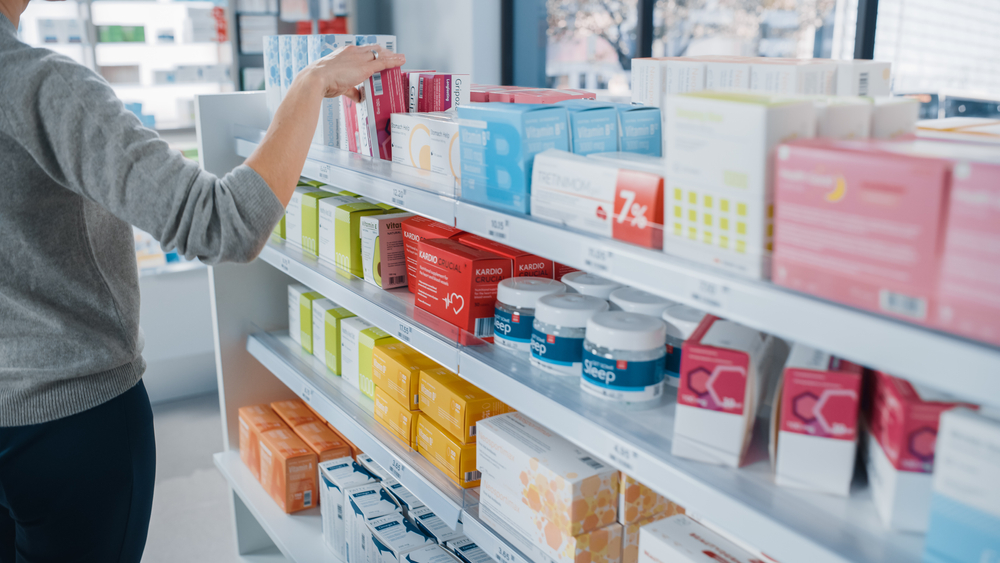Cosmetics: Getting under the skin of patent protection in this fast-moving market
With market trends turbo-charged by social media in particular, the cosmetics industry moves ever faster. This means that staying at least one step ahead of competitors has never been more critical for success – a factor that impacts how cosmetics companies shape their IP strategy.
 Being able to spot the next ‘on-trend’ ingredient and bring it to market fast pays off. But having a robust IP strategy is key to getting the most value out of a new innovation. Gaining patent protection for their inventions allows a business – big or small – to gain a monopoly on a particular product or its use. And in a fast-moving industry like the cosmetics sector, meeting the need for speed at all stages of the cosmetics product development lifecycle, including applying for a patent, is important. It also feeds into using a popular industry technique: enabling brands to use the much-coveted phrase ‘patented technology’ in cosmetics and healthcare advertising.
Being able to spot the next ‘on-trend’ ingredient and bring it to market fast pays off. But having a robust IP strategy is key to getting the most value out of a new innovation. Gaining patent protection for their inventions allows a business – big or small – to gain a monopoly on a particular product or its use. And in a fast-moving industry like the cosmetics sector, meeting the need for speed at all stages of the cosmetics product development lifecycle, including applying for a patent, is important. It also feeds into using a popular industry technique: enabling brands to use the much-coveted phrase ‘patented technology’ in cosmetics and healthcare advertising.
In a previous article, Anne-Marie Conn explored the history of the cosmetics industry through some key patents. Here, I take a look at the patent landscape today to see how it’s been influenced by up and coming trends and how an IP strategy can be adapted for this fast paced industry.
So what can the patents data tell us?
Trends, of course, are nothing new. Consumers have always hankered after the newest, most innovative personal care products. Ancient Egyptians painted green malachite on their eyelids. Or fast forward to the early 1900s – that’s when L’Oréal first started inventing and popularising synthetic hair dyes. Booms and rapid swings are intrinsic to the cosmetics market.
Perhaps nothing better illustrates this tendency than the trend in annual global patent application filings relating to cannabidiol or CBD oil. Produced from cannabis, but without the compound THC responsible for its psychoactive effects, CBD products have been making a splash in the last couple of years. As Figure 1 illustrates, global filings relating to CBD prior to 2014 were steady but numbered fewer than 500 applications per year. From 2014 onwards, though, an explosion in CBD interest resulted in peak filing numbers up by well over 500+% in 2020 to 2,904.

Figure 1: The number of patent applications filed globally per year and relating to CBD or cannabidiol. Source: Data from PatentScout, provided by Clarivate*
Purported to have antioxidant and anti-inflammatory benefits, the number of patent application filings relating specifically to cosmetic applications of CBD also rapidly grew from 2018 onwards, as shown in Figure 2. The acceleration in patent filings relating to cosmetic CBD was a few years behind the increase in patent filings relating to CBD more generally. Perhaps this delay in cosmetic CBD related filings was due to the earliest applicants seeking broad protection not limited to a particular industry or application? Remember, the first to file a patent application relating to a particular ingredient will be able to seek the broadest patent protection. Or maybe it reflects the time taken for innovators to discover how this new ingredient might be used to achieve a cosmetic benefit?

Figure 2: The number of patent applications filed globally per year and relating to CBD or cannabidiol and cosmetics. Source: Data from PatentScout, provided by Clarivate
Another cosmetics ingredient also experiencing a filings spike is Centella asiatica. This herb grows naturally in Asia and has been used for thousands of years in traditional medicine, home remedies and also as a food. An ingredient that’s commonly known as tiger grass, it’s also recently gained popularity through K-beauty products coming out of South Korea. Given Centella asiatica’s origins in Asia, it’s no surprise that of the approximately 5,700 related patent applications filed since 2003, about 3,000 of them have been filed in China and Korea (Figure 3).

Figure 3: The total number of patent applications filed in each state and relating to Centella asiatica. Source: Data from PatentScout, provided by Clarivate.
Looking at PatentScout® filings over time, as shown in Figure 4, we can see that from 2003 to 2016, cosmetics-related filings for Centella asiatica as an ingredient were relatively low – hovering between 50-75 filings each year. However, in 2020 there were over 250 such filings relating to cosmetic applications of Centella asiatica, with this number increasing to over 600 in 2020, when all patent filings relating to Centella asiatica (including those outside the cosmetic industry) are taken into account. This bucked the ‘Covid dip’ seen in patent application filing numbers for other cosmetic ingredients in 2019/2020. Perhaps it’s the influence of a global rise of K-pop culture? Or have markets outside of Asia recently become aware of this valuable ingredient via some other route?

Figure 4: The number of patent applications filed globally per year and relating to Centella asiatica and cosmetics. Source: Data from PatentScout, provided by Clarivate.
It will be interesting to see if this recent flurry in filing activity will continue into the 2020s. However we’ll need to wait a little longer to find out. Data from late 2021 and 2022 is largely not yet available, given that patent applications are normally published about 18 months after their priority or filing date.
On the rise for some years, niacinamide is an ingredient that’s continued to play a high profile role on the beauty scene in 2023. It’s a vitamin B3 derivative with multiple claimed skin enhancing properties ranging from reducing signs of premature aging and regulating oil production, through to skin brightening. An antioxidant, it has been shown to reduce UV damage and inflammation.
Data for niacinamide patent application filings shows steady growth in 2009-2016, a peak in filings in 2017 and then a steady drop-off (Figure 5). This may illustrate short-lived industry interest in innovating with particular ingredients – for example a point might have been reached when the patent field had become saturated. It’s important to consider how to navigate a saturated patent space before launching a new product to understand your ‘Freedom to Operate’ in a particular area. That means considering if your new product or process infringes third party patents. Abel + Imray can help you assess your freedom to operate.

Figure 5: The number of patent applications filed globally per year and relating to niacinamide and cosmetics. Source: Data from PatentScout, provided by Clarivate.
Ferulic acid, found in oats, bran and rice, is a lesser known player in the world of powerful antioxidants. Alongside its ability to fight free radicals and slow down ageing caused by oxidation, it’s been shown to stabilise vitamin C, as well as boost the efficacy of vitamin A and C.
As shown in Figure 6, patent filings relating to ferulic acid applications in cosmetics show generally slow but steady growth since 2003– and spotting such a pattern early enough can highlight an opportunity before products become mainstream.
It will be interesting to see how the industry continue to innovate with this new ingredient and whether that results in a continued increase in patent filings. Remember, in order to be granted a patent, an invention needs to be new and inventive over existing products or uses and any relevant disclosures to the public, including published patent applications. The sooner the patent application is filed, the more likely it will meet those crucial requirements! Therefore, we expect to see a continued increase in patent filing numbers for the next few years as new applications for this ingredient are discovered, before a drop off as the patent space becomes saturated.

Figure 6: The number of patent applications filed globally per year and relating to ferulic acid and cosmetics. Source: Data from PatentScout, provided by Clarivate.
Tapping into IP agility
Converting this kind of filings intelligence into actionable business strategy in cosmetics demands an agile framework so you can protect IP and plan its exploitation as quickly as possible. These three key messages come across from the data that we have analysed:
- Don’t delay filing your patent application – As we have seen in the case of CBD, new filings of patent applications in a particular field can explode before rapidly dropping off. It pays to be ahead of the patent filing curve to get the best chance of obtaining the broadest protection. Too late and it will be more difficult to obtain patent protection and any granted claims may cover only a small group of products or processes. However, it’s important not to file too early and before you properly understand and have tested your invention. Abel + Imray can help you find the right balance.
- Speed up patent prosecution – Obtaining patent protection can be a slow process. That’s a disadvantage in an industry where products may only be on the shelves for a few years before they make way for the ‘Next Big Thing’. But it doesn’t have to be slow. There are several strategies that can be used to speed up the examination process. For example, a Demand for International Preliminary Examination can be filed on an International application to allow interaction between the Examiner and Applicant in the International phase. That may help an agreement on allowable claims be reached before entering the national/regional phase which can then speed up the application process on a national/regional level. Find out more about the process here. Similarly, the Patent Prosecution Highway (PPH) may be used to accelerate examination based on the positive outcome in at least one other country. Utility models are also available in some countries. Although having shorter lifetimes than patents, the examination process is much less burdensome for utility models and they may be granted in a matter of weeks, rather than years. Abel + Imray are here to find the best strategy for you.
- Spot future trends – We have seen that the growth in products containing a particular ingredient hitting our shelves may be predicted by upward patent filing trends. Perhaps monitoring the patent landscape can be used to predict the next big thing before it comes to the market? Watching the wider patent landscape may help innovators identify ingredients that have so far been little explored in the cosmetics industry.
* Clarivate and PatentScout are trademarks of their respective owners and used herein with permission.
About Abel + Imray:
Our attorneys are scientists who have experience of working within the Consumer Healthcare sector, and understand the importance of IP for your organisation.
We are a European firm and assist our clients to protect their IP rights in the UK, Europe and worldwide from our offices in the UK and The Netherlands and through our international network of trusted local attorneys.
Get in touch if you would like to discuss your innovations and brand protection further.
About the blogpost author:
 Katy is a member of the chemistry team at Abel + Imray, and works with clients across a range of chemical applications including catalysis, polymers, lubricants, fuels, skincare, post- and probiotics, inhalable therapeutics and cosmetics. She is experienced in drafting and prosecuting patent applications relating to cosmetics, skincare products, and probiotic and postbiotic supplements. Katy’s knowledge ranges from inhaler devices, such as pressurised metered dose inhalers (pMDIs) and dry powder inhalers (DPI), to formulation development and stabilisation. She is also familiar with drug delivery analysis such as aerodynamic particle size distribution and delivered dose testing, which may be used to approximate how much drug is delivered and where it deposits in the lung. A significant proportion of her work relates to polymers, especially polyethylene and polypropylene polymers, petrochemicals, reactor technology, and catalysis, including zeolites and metallocenes.
Katy is a member of the chemistry team at Abel + Imray, and works with clients across a range of chemical applications including catalysis, polymers, lubricants, fuels, skincare, post- and probiotics, inhalable therapeutics and cosmetics. She is experienced in drafting and prosecuting patent applications relating to cosmetics, skincare products, and probiotic and postbiotic supplements. Katy’s knowledge ranges from inhaler devices, such as pressurised metered dose inhalers (pMDIs) and dry powder inhalers (DPI), to formulation development and stabilisation. She is also familiar with drug delivery analysis such as aerodynamic particle size distribution and delivered dose testing, which may be used to approximate how much drug is delivered and where it deposits in the lung. A significant proportion of her work relates to polymers, especially polyethylene and polypropylene polymers, petrochemicals, reactor technology, and catalysis, including zeolites and metallocenes.



